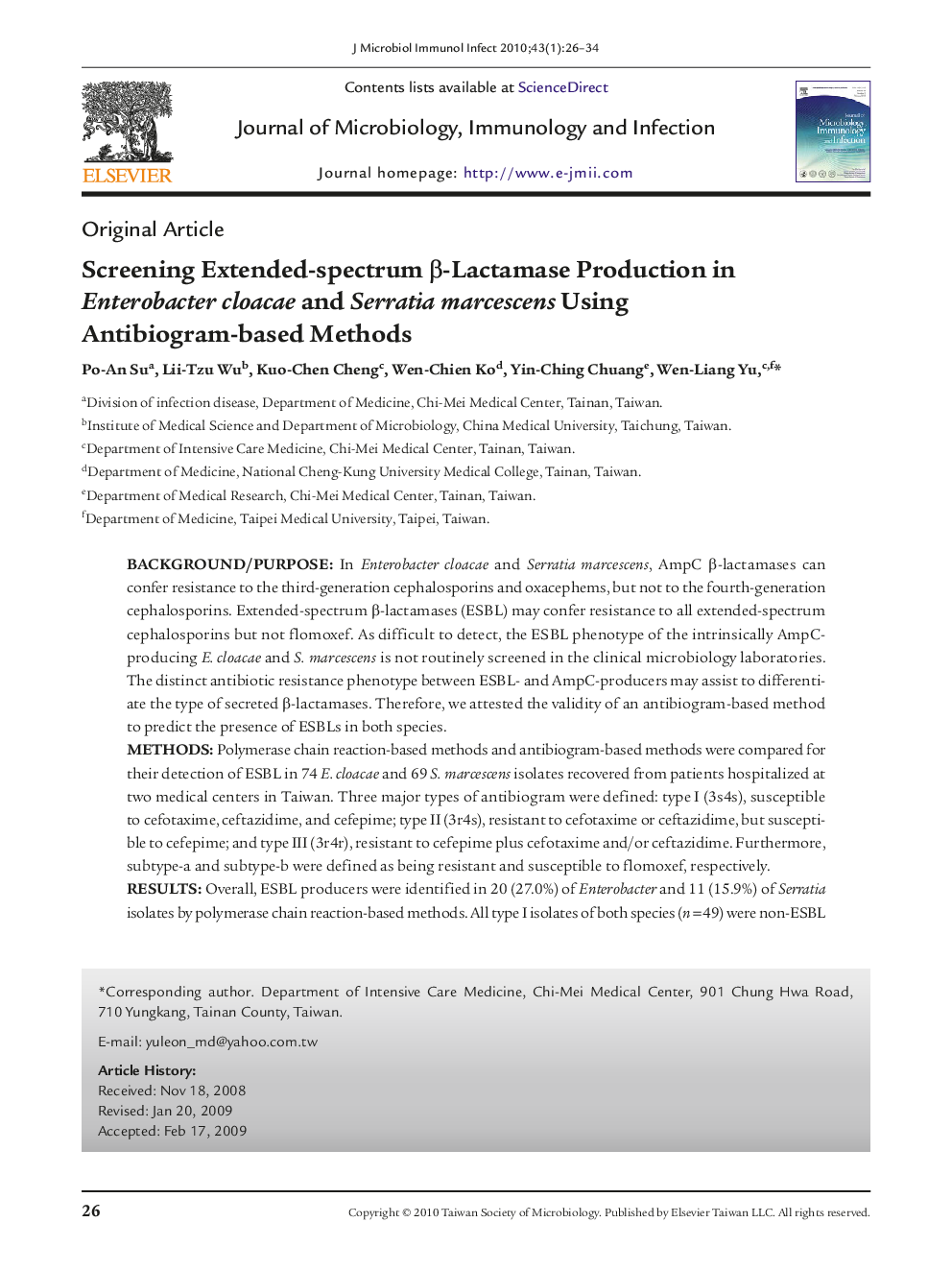| کد مقاله | کد نشریه | سال انتشار | مقاله انگلیسی | نسخه تمام متن |
|---|---|---|---|---|
| 3378434 | 1220084 | 2010 | 9 صفحه PDF | دانلود رایگان |

Background/PurposeIn Enterobacter cloacae and Serratia marcescens, AmpC β-lactamases can confer resistance to the third-generation cephalosporins and oxacephems, but not to the fourth-generation cephalosporins. Extended-spectrum β-lactamases (ESBL) may confer resistance to all extended-spectrum cephalosporins but not flomoxef. As difficult to detect, the ESBL phenotype of the intrinsically AmpC- producing E. cloacae and S. marcescens is not routinely screened in the clinical microbiology laboratories. The distinct antibiotic resistance phenotype between ESBL- and AmpC-producers may assist to differentiate the type of secreted β-lactamases. Therefore, we attested the validity of an antibiogram-based method to predict the presence of ESBLs in both species.MethodsPolymerase chain reaction-based methods and antibiogram-based methods were compared for their detection of ESBL in 74 E. cloacae and 69 S. marcescens isolates recovered from patients hospitalized at two medical centers in Taiwan. Three major types of antibiogram were defined: type I (3s4s), susceptible to cefotaxime, ceftazidime, and cefepime; type II (3r4s), resistant to cefotaxime or ceftazidime, but susceptible to cefepime; and type III (3r4r), resistant to cefepime plus cefotaxime and/or ceftazidime. Furthermore, subtype-a and subtype-b were defined as being resistant and susceptible to flomoxef, respectively.ResultsOverall, ESBL producers were identified in 20 (27.0%) of Enterobacter and 11 (15.9%) of Serratia isolates by polymerase chain reaction-based methods. All type I isolates of both species (n= 49) were non-ESBL producers. In E. cloacae, all subtype IIb (n = 6) and type III (n = 6) isolates produced ESBLs, but only 8 of 17 IIa isolates produced ESBLs. The IIb and III types had the highest positive predictive value (100%) and specificity (100%) for ESBL detection. In S. marcescens, type II isolates rarely produced ESBLs (4/57 isolates), while seven of type III (n = 8) isolates produced ESBLs. Type III antibiogram had the highest positive predictive value (87.5%) and specificity (98.3%) for ESBL detection.ConclusionThe antibiograms of subtype IIb and type III are highly predictive for ESBL detection in E. cloacae, while type III is highly predictive for ESBL detection in S. marcescens. It is imperative to further examine ESBLs, focusing on the E. cloacae isolates with antibiogram subtype IIa.
Journal: Journal of Microbiology, Immunology and Infection - Volume 43, Issue 1, February 2010, Pages 26-34